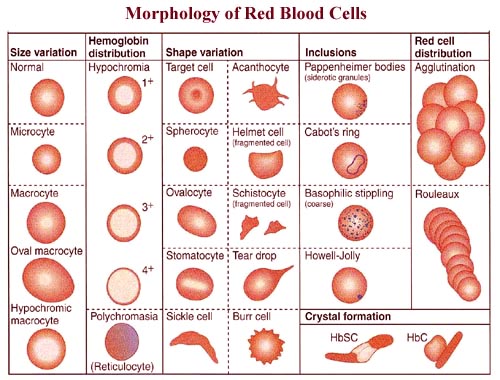Microcytic Anemia
Microcytic anemia refers to the presence of red blood cells (RBCs) smaller than normal in a lab sample. This finding is usually coupled with reduced hemoglobin in the RBCs, known as "hypochromic anemia" because the cells are paler than normal. Microcytic anemia is defined as a Mean Cell Volume (MCV) of less than 80 cubic mm. Each lab sets its own range, so this number may vary. The most common cause of microcytic anemia is iron deficiency. Iron is necessary to the formation of hemoglobin so, when it is lacking, RBCs are small (microcytic) and pale (hypochromic). The body stores iron in the bone marrow. When iron intake is not enough to provide for daily needs, the storage iron (ferritin) is activated. If iron stores continue to be depleted without replacement, the body's ability to make new RBCs (erythropoiesis) will be impaired. Microcytic anemia can be detected on a routine test lab. Some common symptoms of this type are pale skin, dizziness, conjunctivitis, short breath during exercise, fatigue, urge to eat chalk or dirt and decreased stamina.
